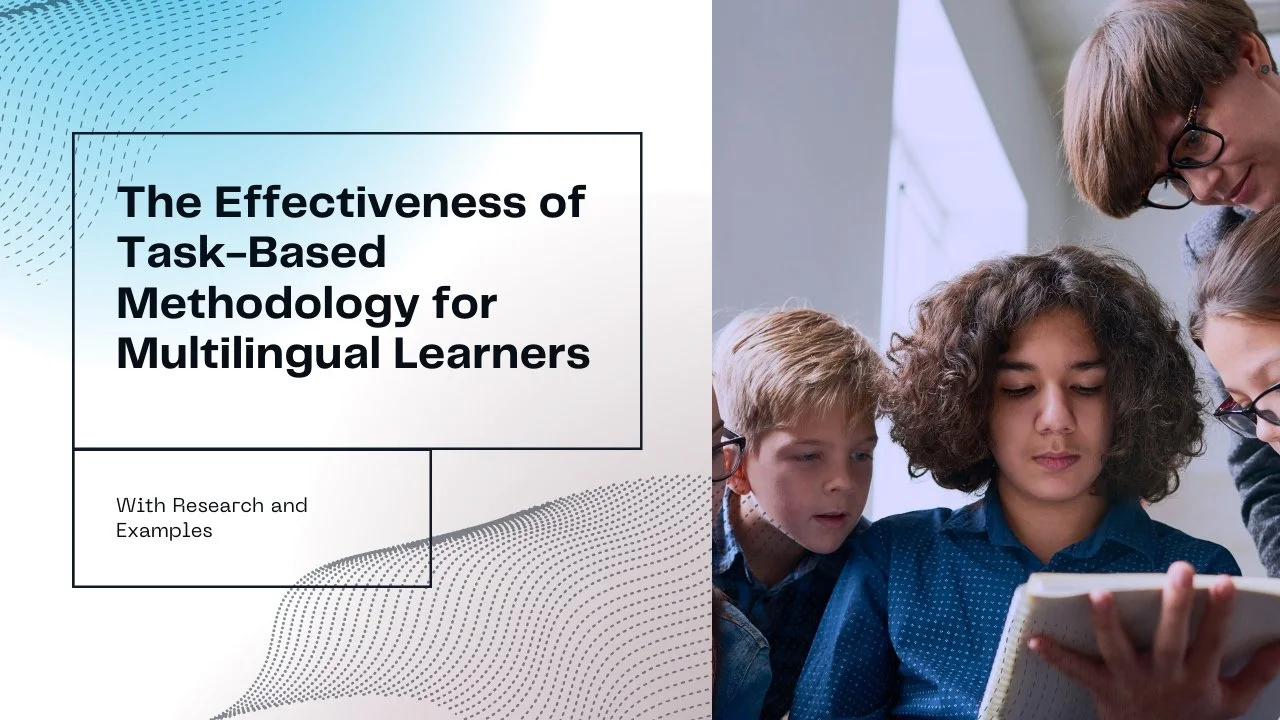The Effectiveness of Task-Based Methodology for Multilingual Learners
Language learning is a dynamic and complex process, especially for multilingual learners. In a world where global communication is more important than ever, it is crucial to employ effective teaching methodologies that cater to the diverse linguistic backgrounds of students. One such methodology that has gained prominence in recent years is Task-Based Language Teaching (TBLT). This blog post explores the effectiveness of Task-Based Methodology for multilingual learners, backed by evidence from educational research.
What is Task-Based Language Teaching?
Task-Based Language Teaching is an innovative and communicative approach to language learning that emphasizes the practical use of language in authentic situations. It places learners in the role of active problem-solvers, focusing on real-life tasks and meaningful communication. Rather than traditional rote learning, TBLT engages students in interactive activities and encourages them to use the target language to accomplish tasks, such as solving problems, completing projects, or making decisions.
The Effectiveness of Task-Based Methodology
1. Enhanced Communication Skills
A study conducted by Willis and Willis (2007) found that Task-Based Language Teaching significantly enhances students' communication skills. Multilingual learners often struggle with language barriers, but TBLT provides a platform for them to communicate effectively with their peers in a supportive environment. This not only boosts their language proficiency but also builds their confidence in using the language for practical purposes.
2. Increased Motivation
Motivation plays a vital role in language learning, and TBLT is known to motivate multilingual learners. In a study by Nunan (2004), it was observed that learners who engaged in task-based activities were more motivated and invested in their language learning journey. This motivation stems from the intrinsic satisfaction of completing meaningful tasks and the relevance of the language to their everyday lives.
3. Development of Multilingual Competence
Multilingual learners often possess a wealth of linguistic resources that can be harnessed in TBLT. A research study by Bygate (2017) highlighted that TBLT allows students to draw upon their multilingual backgrounds, promoting cross-linguistic transfer and the development of multilingual competence. This helps learners become more versatile and adaptable in their language use.
4. Cultural Awareness
TBLT often incorporates culturally diverse tasks that can be particularly beneficial for multilingual learners. As stated by Skehan (1996), tasks that require learners to explore and understand different cultural perspectives can broaden their horizons, fostering cultural awareness and sensitivity. This is especially important in a globalized world where intercultural communication is key.
5. Overcoming Language Anxiety
Multilingual learners may experience language anxiety due to the pressure of speaking a non-native language. TBLT creates a supportive and non-judgmental environment, reducing language anxiety. A study by Skehan (1998) found that students who engaged in TBLT activities reported feeling less anxious when using the target language.
Conclusion
Task-Based Language Teaching is an effective and engaging approach for multilingual learners. It enhances communication skills, boosts motivation, encourages the development of multilingual competence, promotes cultural awareness, and helps students overcome language anxiety. With these advantages, it is clear that TBLT is a valuable methodology for teaching multilingual learners. By incorporating meaningful tasks into language lessons, educators can empower their students to become proficient and confident multilingual communicators.
References:
1. Willis, J., & Willis, D. (2007). Doing Task-Based Teaching. Oxford University Press.
2. Nunan, D. (2004). Task-Based Language Teaching. Cambridge University Press.
3. Bygate, M. (2017). Speaking. In H. Hinkel (Ed.), Handbook of Research in Second Language Teaching and Learning (Vol. 2, pp. 719-734). Routledge.
4. Skehan, P. (1996). A Framework for the Implementation of Task-Based Instruction. Applied Linguistics, 17(1), 38-62.
5. Skehan, P. (1998). A Cognitive Approach to Language Learning. Oxford University Press.

